
How to Use IP2369 2S-6S Charging Module Li-Ion LiFePO4: Examples, Pinouts, and Specs
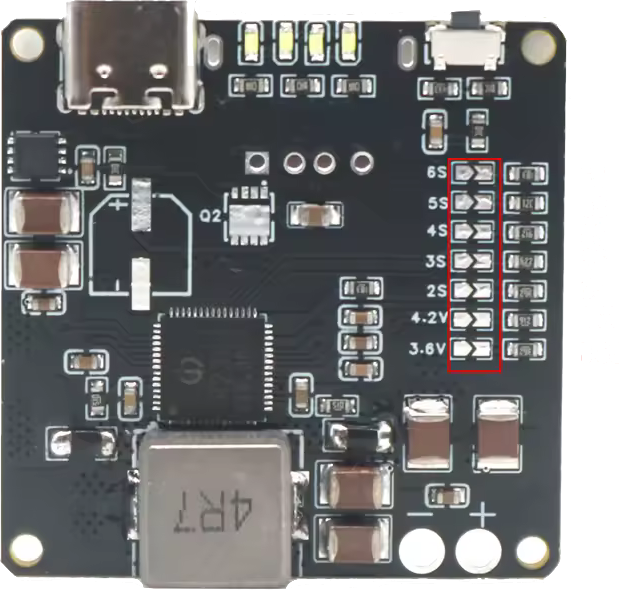
 Design with IP2369 2S-6S Charging Module Li-Ion LiFePO4 in Cirkit Designer
Design with IP2369 2S-6S Charging Module Li-Ion LiFePO4 in Cirkit DesignerIntroduction
The IP2369 2S-6S Charging Module is a versatile and efficient charging solution designed for lithium-ion (Li-Ion) and lithium iron phosphate (LiFePO4) batteries. It supports battery packs with 2 to 6 series cells, ensuring safe and reliable charging. The module is equipped with advanced features such as overcharge protection, balance charging, and high charging efficiency, making it ideal for a wide range of applications.
Explore Projects Built with IP2369 2S-6S Charging Module Li-Ion LiFePO4
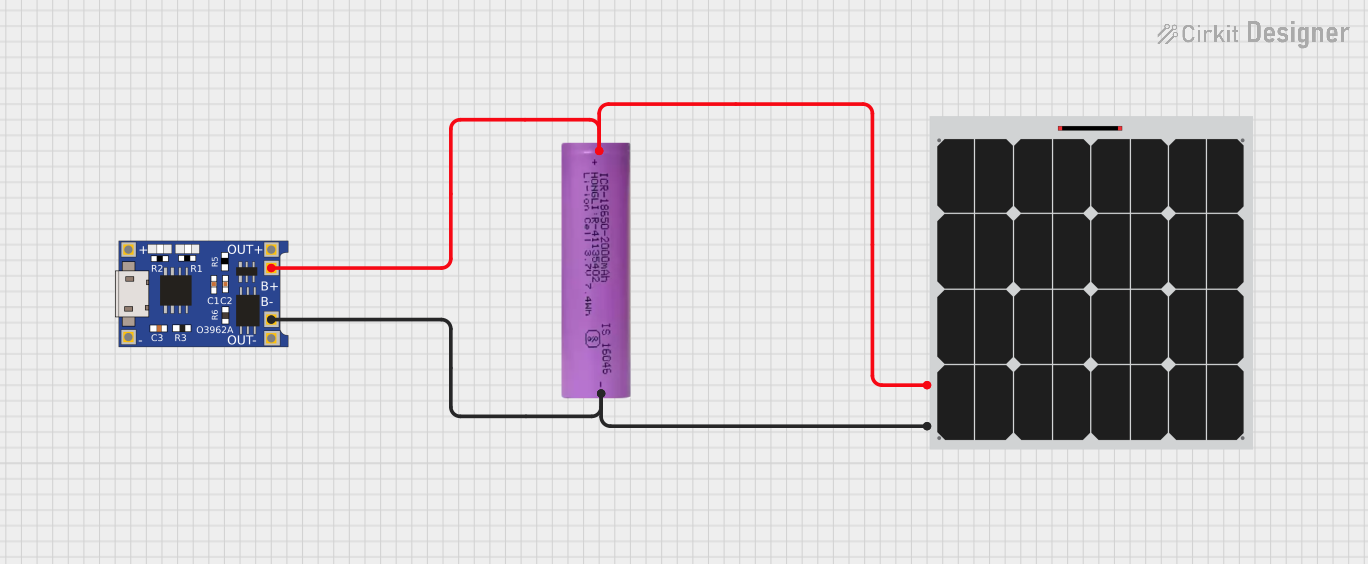
 Open Project in Cirkit Designer
Open Project in Cirkit Designer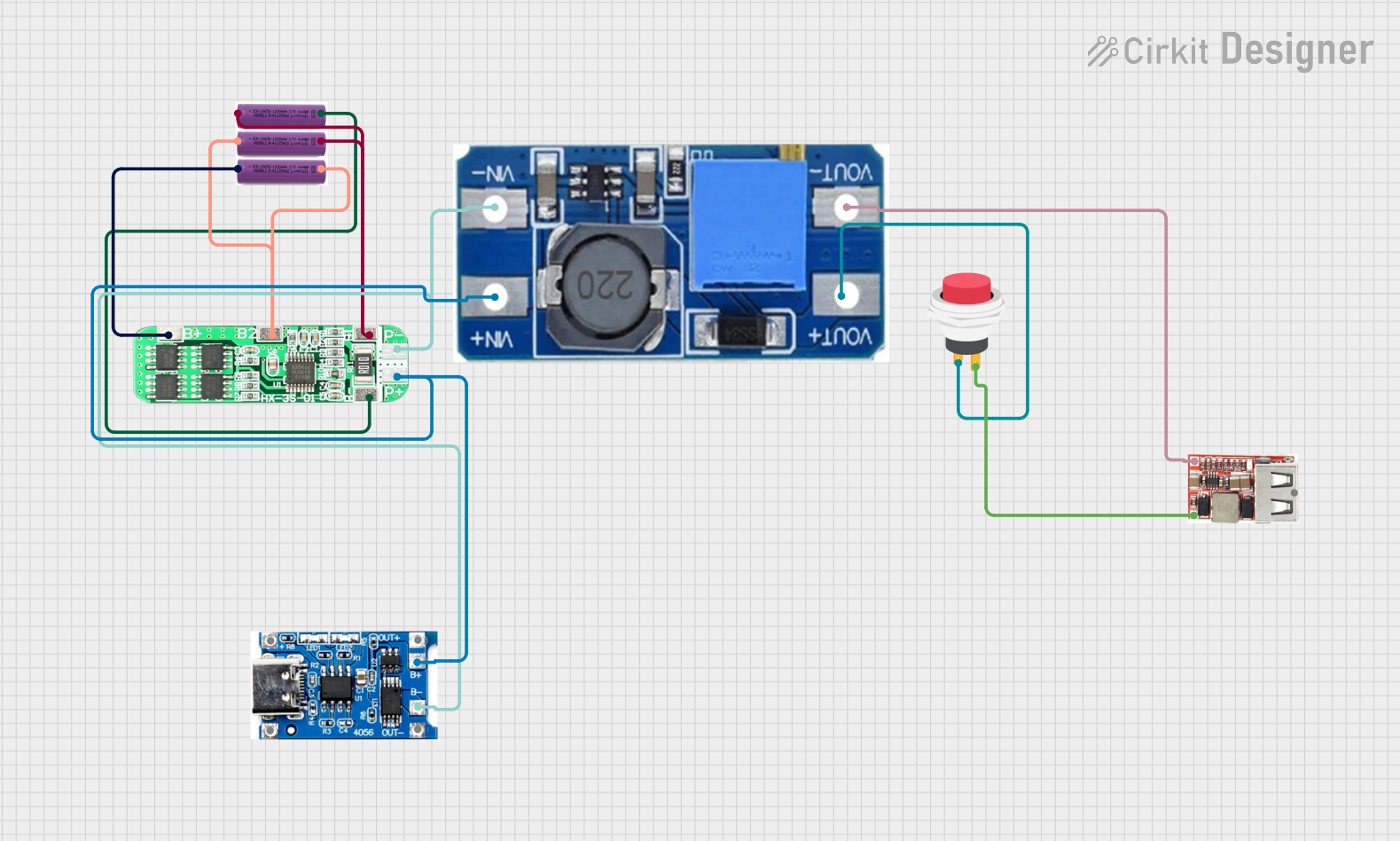
 Open Project in Cirkit Designer
Open Project in Cirkit Designer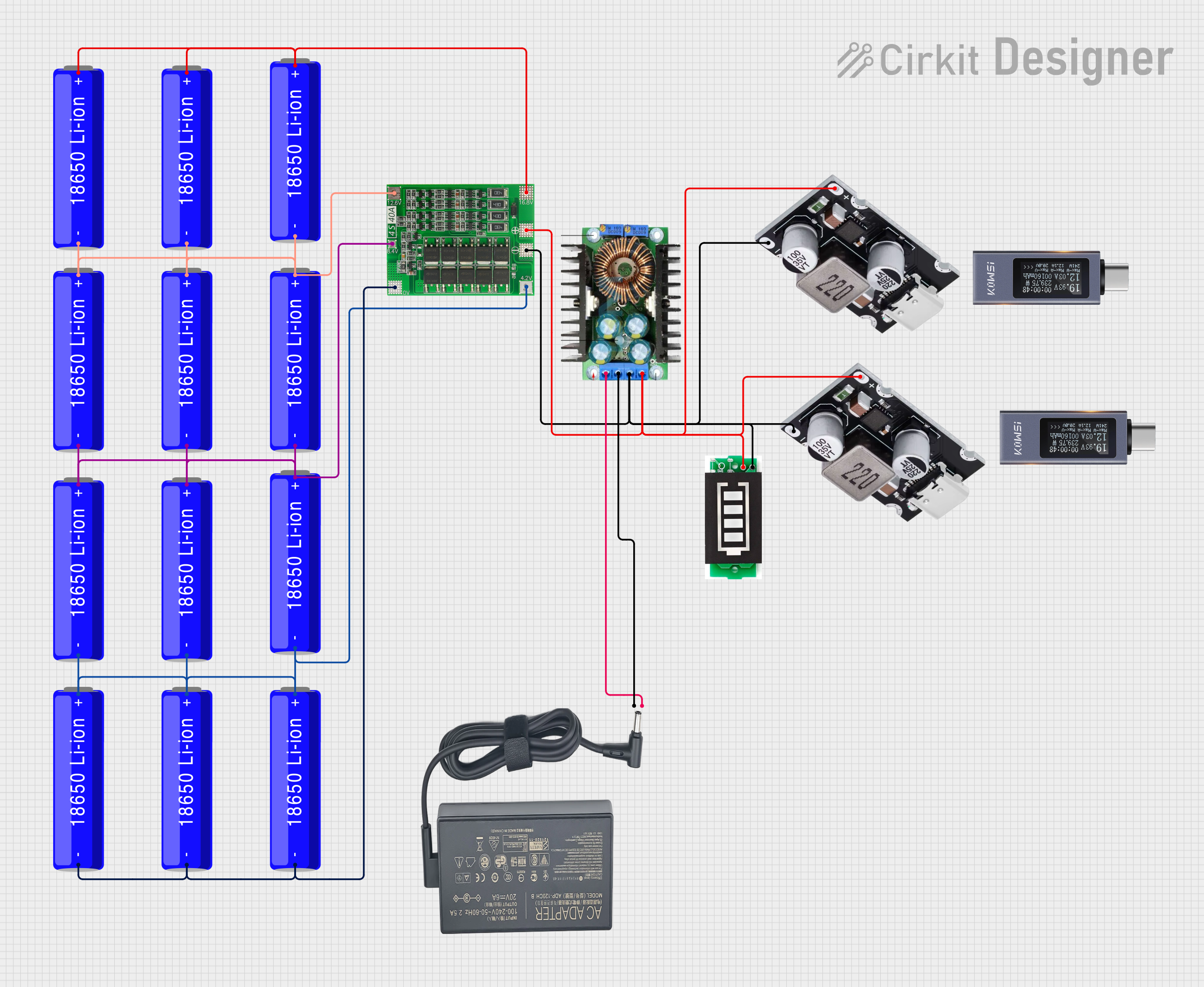
 Open Project in Cirkit Designer
Open Project in Cirkit Designer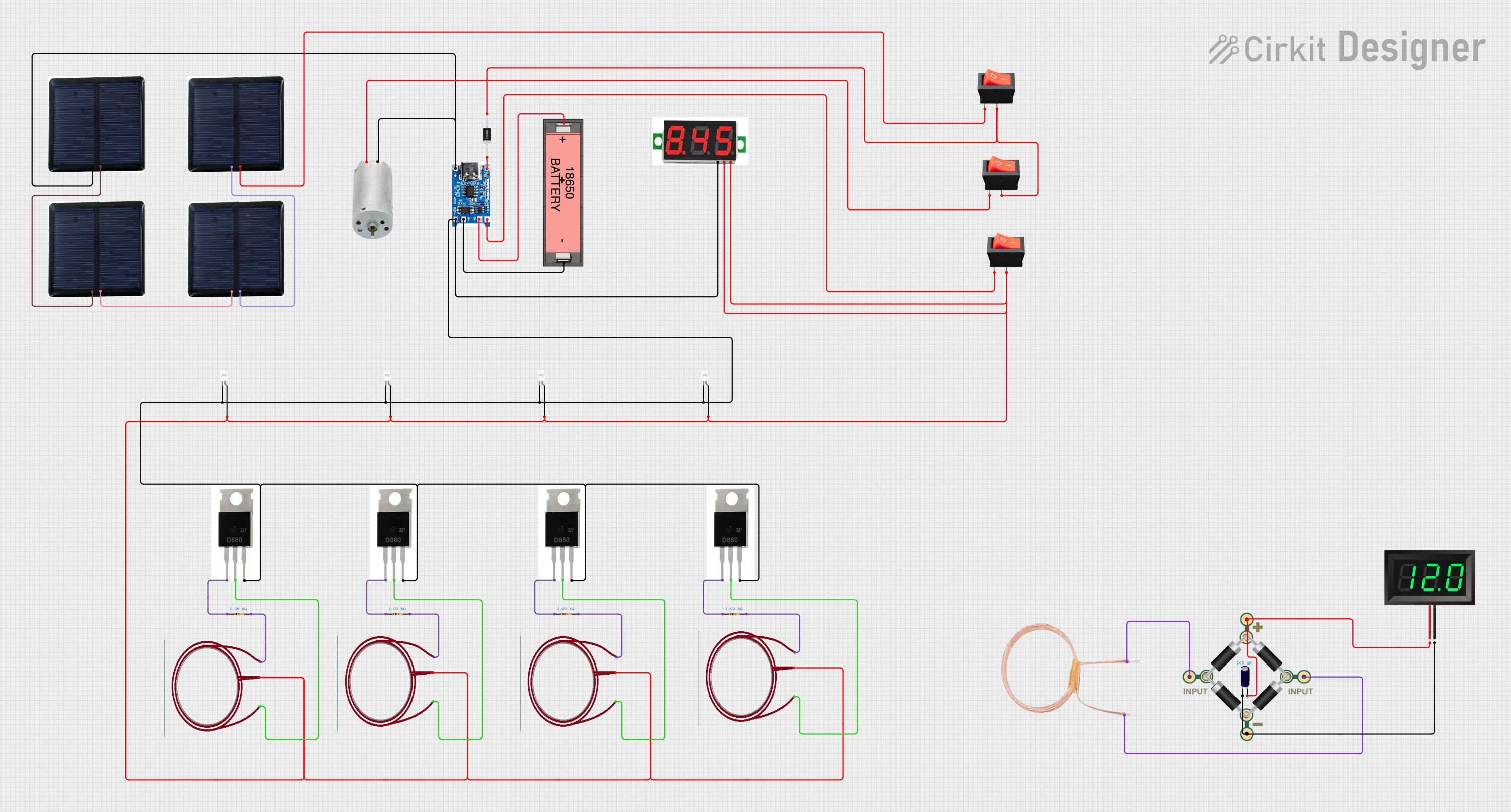
 Open Project in Cirkit Designer
Open Project in Cirkit DesignerExplore Projects Built with IP2369 2S-6S Charging Module Li-Ion LiFePO4

 Open Project in Cirkit Designer
Open Project in Cirkit Designer
 Open Project in Cirkit Designer
Open Project in Cirkit Designer
 Open Project in Cirkit Designer
Open Project in Cirkit Designer
 Open Project in Cirkit Designer
Open Project in Cirkit DesignerCommon Applications and Use Cases
- Electric vehicles and e-bikes
- Power tools and portable devices
- Solar energy storage systems
- Robotics and drones
- Backup power supplies and uninterruptible power systems (UPS)
Technical Specifications
Below are the key technical details and pin configurations for the IP2369 module:
Key Technical Details
| Parameter | Value |
|---|---|
| Input Voltage Range | 8V to 60V |
| Supported Battery Types | Li-Ion, LiFePO4 |
| Number of Cells Supported | 2S to 6S (series configuration) |
| Charging Current | Up to 10A (adjustable) |
| Balance Current | 50mA to 200mA |
| Overcharge Protection | Yes |
| Operating Temperature | -20°C to 85°C |
| Dimensions | 60mm x 30mm x 10mm |
Pin Configuration and Descriptions
| Pin Name | Description |
|---|---|
| B+ | Battery pack positive terminal |
| B- | Battery pack negative terminal |
| P+ | Positive terminal for power input/output |
| P- | Negative terminal for power input/output |
| Balance Ports | Individual connections for each cell in the battery pack (B1, B2, etc.) |
Usage Instructions
How to Use the IP2369 in a Circuit
Connect the Battery Pack:
- Connect the positive terminal of the battery pack to the
B+pin. - Connect the negative terminal of the battery pack to the
B-pin. - For balance charging, connect each cell's positive terminal to the corresponding balance port (e.g., B1, B2, etc.).
- Connect the positive terminal of the battery pack to the
Connect the Power Source:
- Attach the power source's positive terminal to the
P+pin. - Attach the power source's negative terminal to the
P-pin. - Ensure the input voltage is within the module's supported range (8V to 60V).
- Attach the power source's positive terminal to the
Adjust Charging Current:
- Use the onboard potentiometer to set the desired charging current.
- Refer to the battery manufacturer's specifications to avoid overcharging or overheating.
Monitor Charging:
- The module's onboard LEDs indicate charging status.
- Ensure the module is placed in a well-ventilated area to prevent overheating.
Important Considerations and Best Practices
- Battery Compatibility: Verify that the battery pack is compatible with the module (Li-Ion or LiFePO4, 2S-6S configuration).
- Balance Charging: Always connect the balance ports for optimal performance and battery longevity.
- Heat Management: Use a heatsink or active cooling if the module operates at high currents for extended periods.
- Safety Precautions: Avoid short circuits and ensure proper insulation of all connections.
Example: Using the IP2369 with an Arduino UNO
The IP2369 can be monitored using an Arduino UNO to track battery voltage and charging status. Below is an example code snippet:
// Example: Monitor battery voltage using Arduino UNO
// Connect the battery pack's positive terminal to A0 via a voltage divider
const int voltagePin = A0; // Analog pin connected to the voltage divider
const float voltageDividerRatio = 5.0; // Adjust based on your resistor values
void setup() {
Serial.begin(9600); // Initialize serial communication
pinMode(voltagePin, INPUT); // Set the voltage pin as input
}
void loop() {
int rawValue = analogRead(voltagePin); // Read the analog value
float batteryVoltage = (rawValue / 1023.0) * 5.0 * voltageDividerRatio;
// Print the battery voltage to the Serial Monitor
Serial.print("Battery Voltage: ");
Serial.print(batteryVoltage);
Serial.println(" V");
delay(1000); // Wait for 1 second before the next reading
}
Note: Use a voltage divider to scale down the battery voltage to a safe range for the Arduino's analog input (0-5V).
Troubleshooting and FAQs
Common Issues and Solutions
Module Overheating:
- Cause: High charging current or poor ventilation.
- Solution: Reduce the charging current using the potentiometer or improve airflow around the module.
Battery Not Charging:
- Cause: Incorrect wiring or insufficient input voltage.
- Solution: Double-check all connections and ensure the input voltage is within the specified range.
Unbalanced Cells:
- Cause: Balance ports not connected or damaged cells.
- Solution: Verify balance port connections and test individual cells for faults.
LED Indicators Not Working:
- Cause: Faulty module or power supply issue.
- Solution: Test the module with a different power source and inspect for physical damage.
FAQs
Q1: Can the IP2369 charge other battery chemistries?
A1: No, the module is specifically designed for Li-Ion and LiFePO4 batteries.
Q2: What happens if I connect a 7S battery pack?
A2: The module only supports up to 6S configurations. Connecting a 7S pack may damage the module or result in improper charging.
Q3: How do I know when the battery is fully charged?
A3: The module's LED indicators will signal when charging is complete. Refer to the module's datasheet for specific LED behavior.
Q4: Can I use the module without balance charging?
A4: While possible, it is not recommended as it may lead to uneven cell voltages and reduced battery lifespan. Always connect the balance ports for optimal performance.